There’s a fungus among us and it’s OK
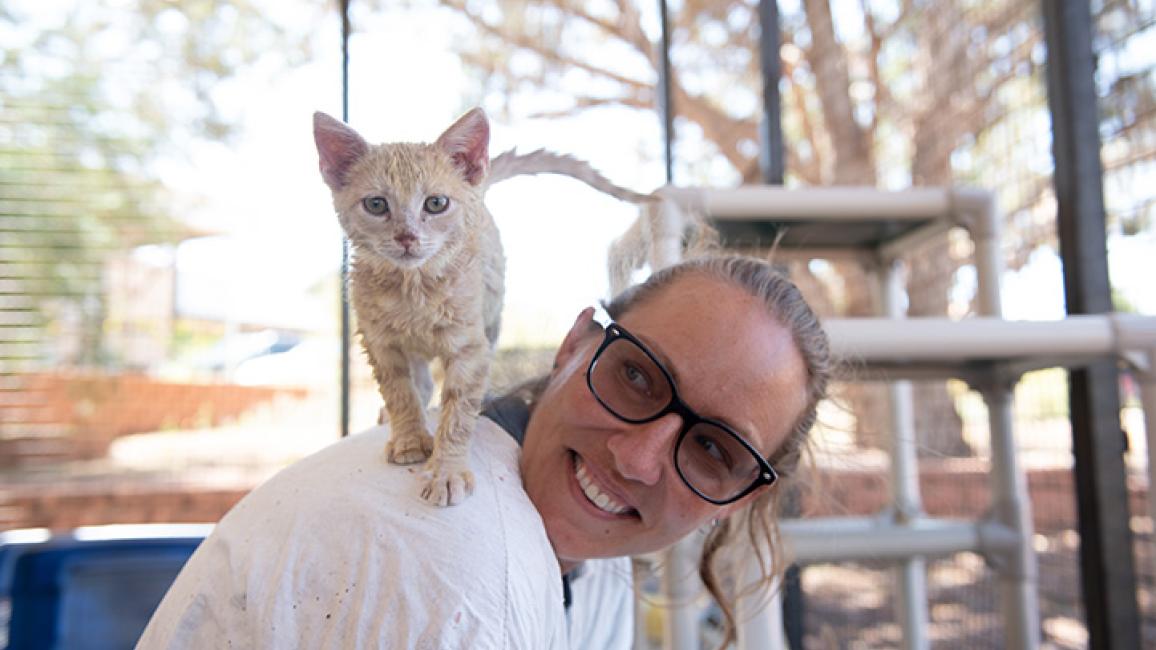
Ringworm: It sounds scary. Right? But this common fungal infection (that’s right, it’s not a worm at all) isn’t much different from athlete’s foot, which a person can catch in a public locker room. Typically, the infection causes circular patches of hair loss and crusty skin, hence its name. It’s easily transmitted between animals and people, though it’s also highly treatable and will even cure itself over time.
For pets in shelters, though, being diagnosed with ringworm can be life-threatening. Kittens under a year old and cats with suppressed immune systems are especially susceptible to the infection, and because it spreads so easily if a shelter isn’t equipped to quarantine and treat infected pets, they end up on the euthanasia list.
Fortunately for kittens like Neon, Truffles and Faith, Best Friends Animal Sanctuary has space where cats with ringworm can be saved, treated and adopted into loving homes. An area at the Sanctuary includes a dedicated ringworm care building where purring, patchy kitties are already passing safely through its doors.
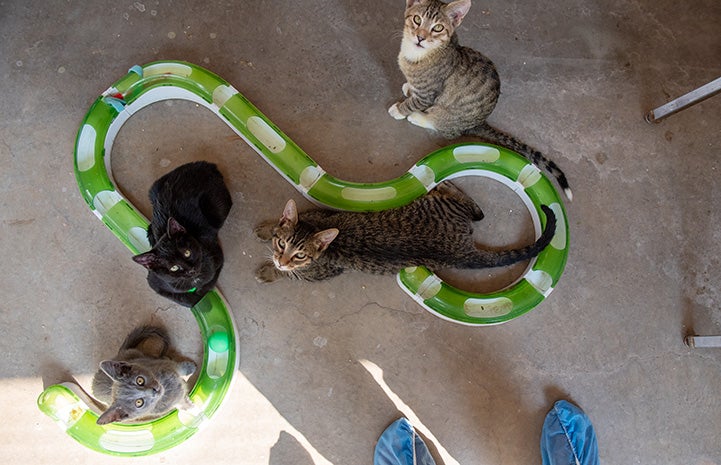
Welcoming cats with ringworm
Of course, kittens and cats with ringworm have always been welcome at the Sanctuary. For example, many kittens with patches of missing fur arrive on lifesaving transports, and veterinary staff and caregivers waste no time getting their treatments started. Lime sulfur dips may be stinky and turn light fur bright yellow for a time, but they’re super effective at killing fungal spores. Antifungal pills help fight the infection from the inside out, while thorough daily cleaning keeps the cats’ living spaces clear of shed spores.
[Momma cat and kittens go from cardboard box to homes]
Sunlight is also a great natural therapy, and the area where cats stay during ringworm treatment is complete with catios for cats to sunbathe their way to healthy skin and fur faster. Having plenty of space to stretch out and play with feline friends also helps keep stress levels down and kittens happy.
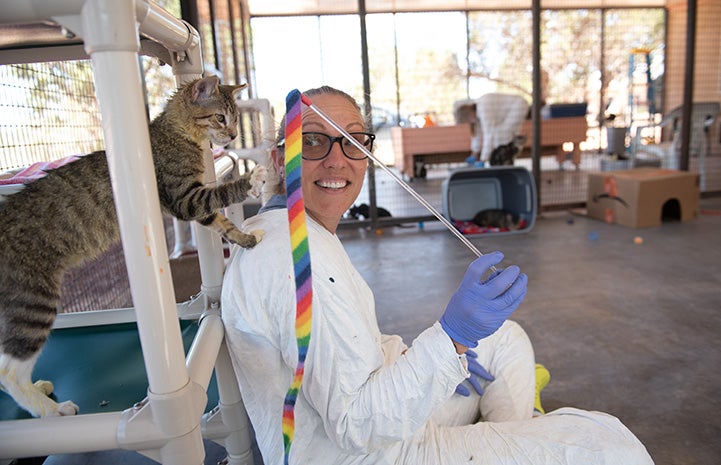
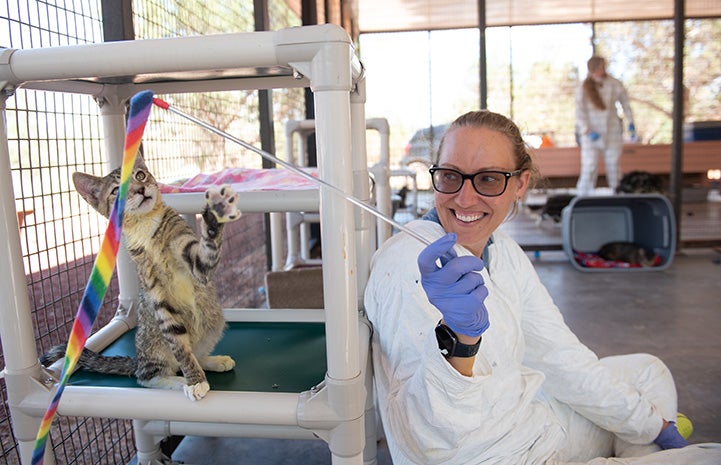
Neon, Truffles, and Faith recently arrived at the Sanctuary on a lifesaving transport full of other kittens with ringworm from different shelters. But their time in the canyon was no different from any other new arrivals. They climbed platforms and darted through their room, chasing after each other this way and that without a care in the world. Their new human friends might’ve been wearing gloves and funny white suits, but as long as the little kittens were getting all the attention they wanted, it didn’t matter.
Once all three kittens’ fur grew back and their ringworm tests came back negative two weeks in a row, they went right on to their new homes. (Kittens are still up for adoption while going through treatment, and some are even whisked away to finish healing with new families.)
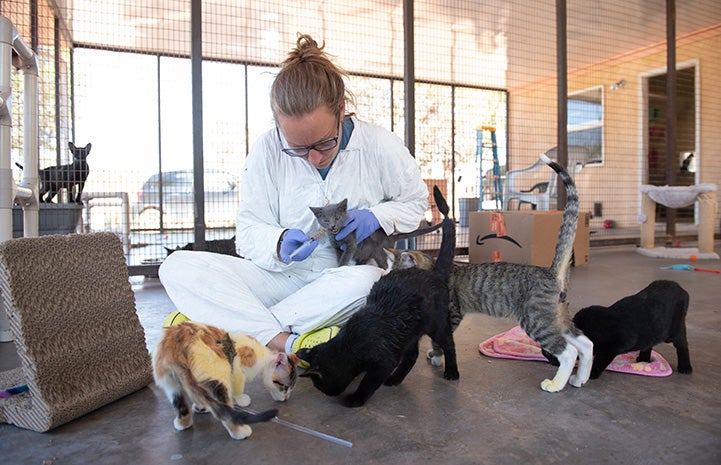
Continuing improvements for cats with ringworm
Having a building specially for cats with ringworm comes in handy when a spot appears on a cat already at the Sanctuary. Previously, if a cat was diagnosed with ringworm, that cat’s entire room was quarantined. Volunteers were still welcome to put on gloves and a gown to go in with them, but many avoided the rooms altogether.
[An itchy cat’s total transformation]
“Now that we have the building for ringworm,” says Brittany Nataro, a supervisor at the Sanctuary, “cats from other buildings don’t need to go on quarantine for it, which means volunteers can go in without hesitation and without feeling uncomfortable about ringworm.” A volunteer who’s not worried about the fungus can go in and spend time with a bunch of friendly felines, who might be just a little stinky and yellow.
Bringing cats with ringworm to another space also means fewer infections in the first place, which cuts down on ringworm cases altogether. It’s win-win.
The ringworm facilities are still being improved and there are plans in the near future to replace the floors and walls with even easier-to-clean surfaces. Because the cleaner the area, the quicker the recovery and the faster our feline friends can get over their fungal phase and into new homes.
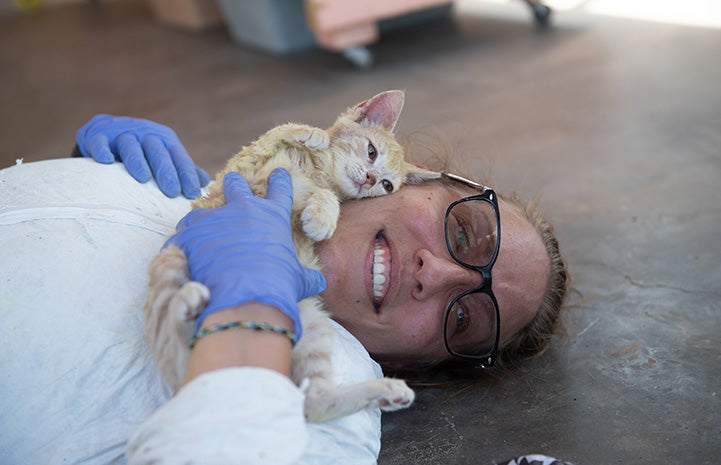
Help homeless pets
Ringworm or no, there’s a lot you can do to help homeless pets near you — from cleaning to walking to snuggling.
Read more:
This cat’s own tail was his worst enemy until he got help for chronic pain
Couple with soft spot for overlooked pets adopts the perfect pair of cats with special needs